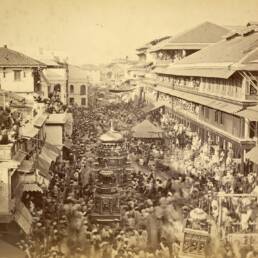Since 1955, the Eastern India Union (EITU) and the United Mizo Freedom (UMFO), had been raising the demand of a separate state comprising all the hill districts of Assam.
But it was kept in abeyance by the States Reorganization Commission (SRC) which made the tribal leaders in the north-east (NE) disillusioned. Little did anyone know that in 3 years’ time, things were about to take an ugly turn.
“Mautâm”, is a cyclic ecological phenomenon that occurs every 48–50 years in the NE Indian states where 30% of the land comprises wild bamboo forests. During this time, “Melocanna baccifera”, a species of bamboo, flowers in large volumes.
This event is followed invariably by a rat flood. The temporary windfall of bamboo seeds keeps multiplying the rats until there’s no more seeds left.
As the number of rats keep increasing so does their need for food, till finally they leave the forests to forage on stored grain that in turn causes devastating famine. The NE states had witnessed the horror last time in 1911.
Those alive from that time could see the dark clouds of an inevitable famine looming. Their warnings however were dismissed by the government of Assam as superstition. The famine inevitably hit the NE in 1958, taking more than 100 lives in the process.
As everyone rushed to save their livelihood, a bounty of 40 paisa was placed on each rat killed. An estimated 2 million rats were killed by locals in the process. Amidst the catastrophic damage, the negligence by the Assam government was blatant.
This was the time when Mizo National Famine Front (MNFF) came into existence. It took lead in demanding relief and encouraged many to come forward and assist in transporting essential commodities to interior villages.
On 22nd October 1961, under the leadership of Laldenga, MNFF dropped the word ‘Famine’ and became Mizo National Front (MNF) with the declared goal of achieving sovereign independence of Greater Mizoram.
While the MNF resorted to violence to secure its goal of establishing the Mizo state, other political forces in the hills of Assam were striving for their own demands of statehood. The search for a political solution continued for the next 2 decades.
A peace offering came in 1984 from the then Prime Minister of India, Indira Gandhi. But before the meeting with Laldenga could take place, she was assassinated.
The quest prolonged for another 3 years until the next Prime Minister of India Rajiv Gandhi finally agreed to sign the Mizoram Peace accord in 1987. Laldenga took oath as the first chief minister of the newly formed Mizoram state.
Today’s Mizoram is a state that attracts numerous tourists each year known for Phawngpui – The Blue Mountain, wonderful caves and various species of beautiful and rare flora and fauna. Another Mautâm did come in 2006 but this time the lessons from the past saved the day.
Sources:
https://mizoram.nic.in/about/history.htm
https://www.jstor.org/stable/4410428
https://changestarted.com/bamboo-and-rats-formed-an-indian-state/
https://www.thebetterindia.com/148387/mizo-peace-accord-laldenga-rajiv-gandhi/
https://mizoram.gov.in/page/phawngpui-blue-mountain
Wikimedia Commons




